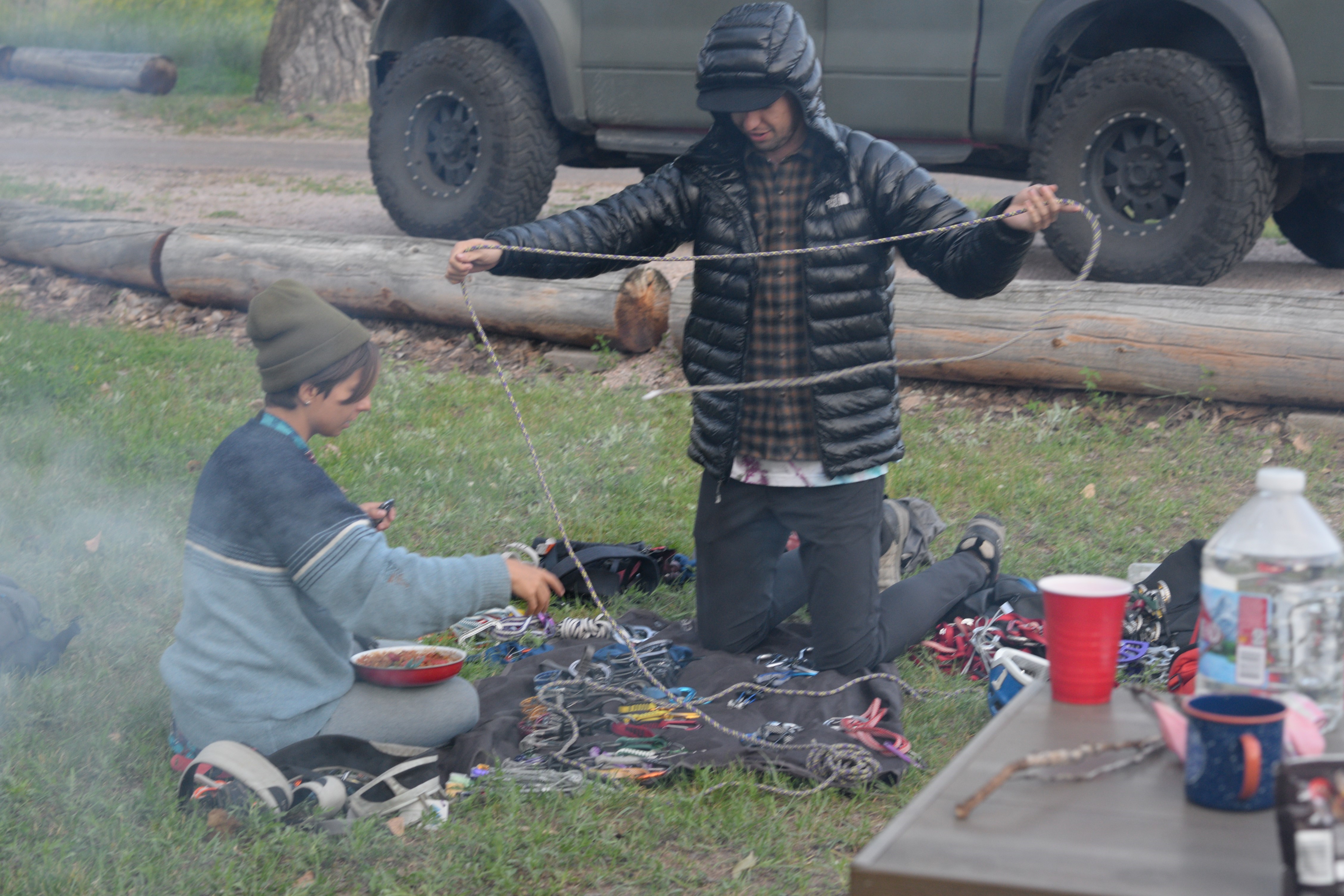Is it Pinkpoint?
I originally wrote this article for the Dallas chapter of the AAC newsletter.

In Trad, traditional climbing, all the protection from falling is placed by you and pre-placing gear is called Pinkpointing. The alternative is called Redpointing when you place the gear yourself as you climb. Although a Pinkpoint is a meaningful achievement, generally most see it as a steppingstone on the path to the true send, finishing a route without falls, a Redpoint.
In Sport climbing where your protection is always pre-placed by others in the form of bolts, "Pinkpoint" isn't even part of the lexicon, unless you end up with a grumpy Trad dad in your crew who feels like complaining about the quality of your sends because you prehung quickdraws, two carabiners connected by fabric, on the route, instead of clipping them to the bolts as you went up.
While Trad dad has a point, and pre-hung draws do make the route easier, can one really draw a parallel between pre-placing in Sport and pre-placing in Trad? Personally, I'd say no, but my opinion is partially tinged by my body type, and the struggle of being five feet, two inches tall in a world where the default is at least five foot six.
In Trad climbing you can place when it suits you, and the rock permits, while in Sport the protection is placed by someone else, and you have to accept it and adapt to it. The reality is that when most people bolt lines they assume that the climber will be able to reach from a certain stance, and I am often not tall enough. In order to reach the bolt, I have to make another, more difficult move that the bolt is intended to protect, to reach the bolt, and then I have to climb back down to clip the rope! This adds more moves to the route and makes potential falls more dangerous for me. When quickdraws are already hung I can reach and save precious energy.
When Trad gear is pre-placed it takes away from the technical difficulty and creativity required to send the route; placing gear is part of the experience and each climber places protection where they think they need it. Much of the difficulty of Trad climbing is mental. You have to know how to place gear properly and you have to trust it to catch you if you fall. When you pre-place gear on a Trad climb you lose the opportunity to practice placements, the mental exertion of planning future placements, and the physical strain of hanging on one hand long enough to place and clip the rope. When you pre-place gear on a sport route the sequence and feeling of the route is preserved and inequality between different size climbers is alleviated.
In the end, this is essentially a question about agency. Trad climbing is all about freedom and self-reliance which is why pre-placed gear radically alters the experience of it and merits a separate name. Sport climbing, on the other hand, lacks this freedom from the get-go which is why pre-hung quickdraws don't effect the quality of a send.